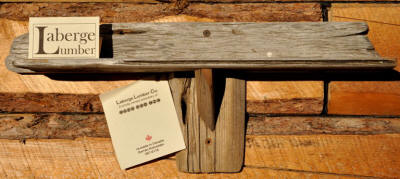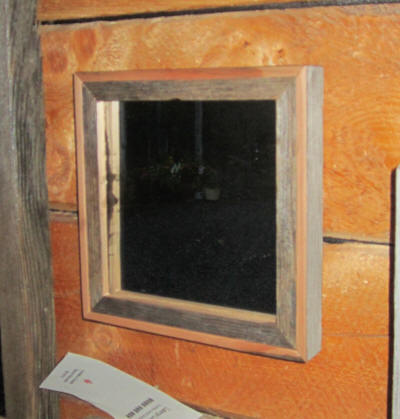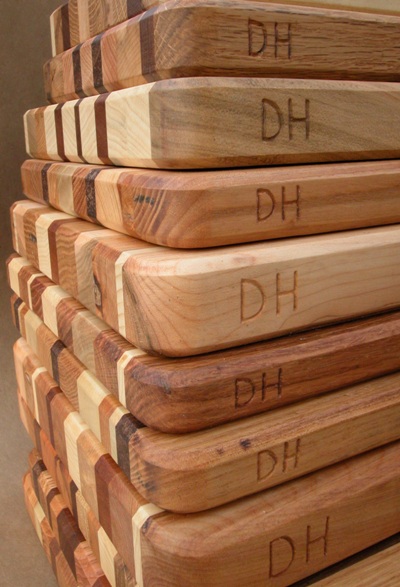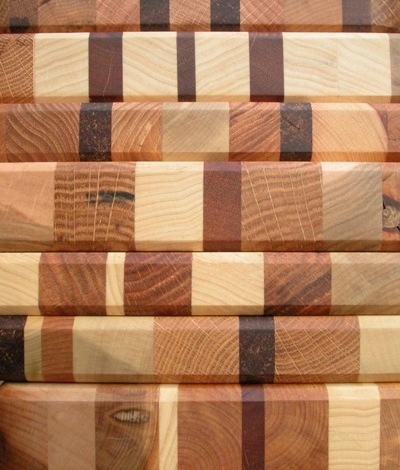| |
 |
|
| |
This wood is salvaged
from the shores of Lake Laberge. During the Klondike Gold Rush,
and up to the 1960’s, the Yukon River was a major transportation route.
Many of these pieces of wood are Douglas-fir, a species that does not
grow in the Yukon.
|
|
| |

Bird Feeders (I have six of these for Spruce
Bog) |
|
| |

 |
|
| |

ladder shelfladder shelves made from douglas
fir made from douglas fir |
|
| |

bracket shelf made from douglas fir |
|
| |
 |
|
| |

reclaimed mirrors and Laberge Lumber finishing
|
|
| |
|
|
| |
sorry, SOLD OUT
 |
|
| |
These
cutting boards are made entirely from salvaged
materials. The wood I collect is not
clearly identifiable with the beautiful grain you see here. I
remove the nails, cut out the damaged sections and plane the weathered
and warped surfaces. I join together strips of wood to make one
board with a selection of wood types. After planing and sanding
again, I apply a beeswax wood finish to protect the surface
(Clapham’s from
Lee
Valley).
You can reapply a similar product once or twice a year with a soft
cloth, and clean the board with soap and water. Don’t let it soak
in water. A sprinkle of baking soda will help remove odours.
Your board can be re-planed after several years. I will be happy
to do this.
|
|
| |
 |
|
| |
 |
|
| |
 |
|
| |
sorry, SOLD OUT
 |
|
| |
|
|
| |
 |
|
| |
All the materials for these gear boxes were either salvaged from the
landfill or redirected from a commercial waste stream
Handles are made from broken
brooms, snow shovels, chairs and the occasional axe.
Most are hardwood.
|
|
| |
 |
|
| |
 |
|
| |


I found these two notes on some of my salvaged wood.
Both are on pressboard panels that form the back of dressers.
In cutting these two pieces, it was clear that the old wood was
better quality than any of today’s materials!
The 1977 dresser was made a few months before I moved to Canada from
England at age 11.
|
|





